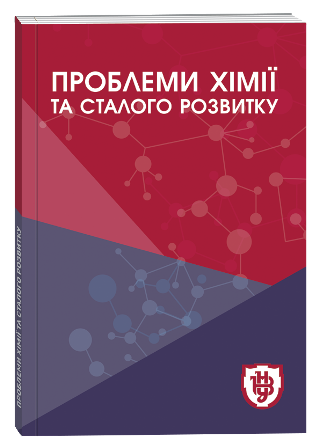ОЦІНКА РИЗИКУ, ПОВ’ЯЗАНОГО З НАДХОДЖЕННЯМ ЗАЛІЗА З ПИТНОЮ ВОДОЮ, ДЛЯ ЗДОРОВ’Я НАСЕЛЕННЯ ЖИТОМИРСЬКОЇ ОБЛАСТІ
DOI:
https://doi.org/10.32782/pcsd-2021-3-2Ключові слова:
питна вода, залізо загальне, середньодобова доза, надходження, референтна доза, неканцерогенний ризикАнотація
Метою дослідження є оцінка вмісту заліза у питній воді джерел нецентралізованого водопостачання сіль- ських населених пунктів Житомирської області та виявлення кількісних характеристик його перорального над- ходження з питною водою для різних вікових груп сільського населення. Методологія. Загалом було відібрано 450 зразків питної води з усіх районів Житомирської області. Аналітич- ні дослідження зразків води на вміст заліза загального здійснювали фотометричним методом на базі вимірю- вальної лабораторії Поліського національного університету. Наукова новизна полягає в оцінюванні ризику виникнення неканцерогенних ефектів через надходження заліза з питною водою для сільського населення Житомирської області різних вікових категорій. Висновки. Середній вміст заліза загального у питній воді сільських населених пунктів коливався від 0,55 у Жито- мирському районі до 1,06 мг/дм3 – на території Новоград-Волинського району. Максимальний його вміст виявлено на рівні 10,6 мг/дм3 у Бердичівському та Новоград-Волинському районах. Встановлено, що середньодобова доза надходження заліза з питною водою для дорослих варіювала у межах від 0,02 до 0,04 мг/кг×добу за середньої його концентрації та від 0,21 до 0,35 мг/кг×добу – за максимальної концентрації заліза. Для дітей за середнього вмісту заліза ця величина коливалась у межах 0,02–0,05 мг/кг×добу, а за максимального вмісту – 0,2–0,51 мг/кг×добу. Роз- раховані величини перевищують референтну дозу, яка становить 0,3 мг/кг×добу, лише за максимальних концен- трацій заліза. Найменші коефіцієнти небезпеки були зафіксовані для підлітків, чоловіків та жінок Житомирського району за середньої концентрації заліза 0,55 мг/дм3, а найбільші величини виявлені для дитячого населення у Берди- чівському та Новоград-Волинському районах за максимальної концентрації заліза на рівні 10,6 мг/дм3. Встановлено, що величина ризику перевищує одиницю лише за умови зростання концентрації заліза до 10 мг/дм3 і більше.
Посилання
WHO. Iron in drinking water. Background document for development of WHO Guidelines for Drinking-water Quality. Geneva, 2003. 9 р.
WHO. Guidelines for drinking-water quality. Geneva, 2011. 564 р.
Гігієнічні вимоги до води питної, призначеної для споживання людиною : ДСанПіН 2.2.4-171-10. URL: https://zakon.rada.gov.ua/laws/show/z0452-10.
Егорова Н.А., Канатникова Н.В. Влияние железа в питьевой воде на заболеваемость населения г. Орла. Hygiene & Sanitation (Russian Journal). 2017. № 96 (11). С. 1049–1053. DOI: 10.18821/0016-9900-2017-96-11-1049-1053.
Heming N., Montravers P., Lasocki S. Iron deficiency in critically ill patients: highlighting the role of hepcidin. Crit. Care. 2011. № 15 (2). P. 210. DOI: 10.1186/cc9992.
Ghosh G.C., Khan M.J.H., Chakraborty T.K. et al. Human health risk assessment of elevated and variable iron and manganese intake with arsenic-safe groundwater in Jashore, Bangladesh. Sci Rep. 2020. № 10. P. 5206. DOI: 10.1038/s41598-020-62187-5.
Валерко Р.А., Герасимчук Л.О., Приходько А.П. Оцінка перорального надходження заліза і марганцю з питною водою для дитячого населення Житомирської області. Challenges, threats and developments in biology, agriculture, ecology, geography, geology and chemistry : international scientific and practical conferencе. Lublin, the Republic of Poland, July 2–3, 2021. Р. 53–57. DOI: 10.30525/978-9934-26-111-4-12.
Руководство по оценке риска для здоровья населения при воздействии химических веществ, загрязняющих окружающую среду / Р 2.1.10.1920-04. Москва : Федеральный центр Госсанэпиднадзора Минздрава России, 2004. 143 с.
Human Health Ambient Water Quality Criteria: 2015 Update. URL: https://www.epa.gov/sites/default/files/2015-10/documents/human-health-2015-update-factsheet.pdf.
Поляков В.Ю., Ревуцкая И.Л., Крохалева С.И. Оценка перорального поступления железа с питьевой водой города Биробиджана для различных возрастных групп населения. Экология человека. 2018. № 1. С. 20–25.







